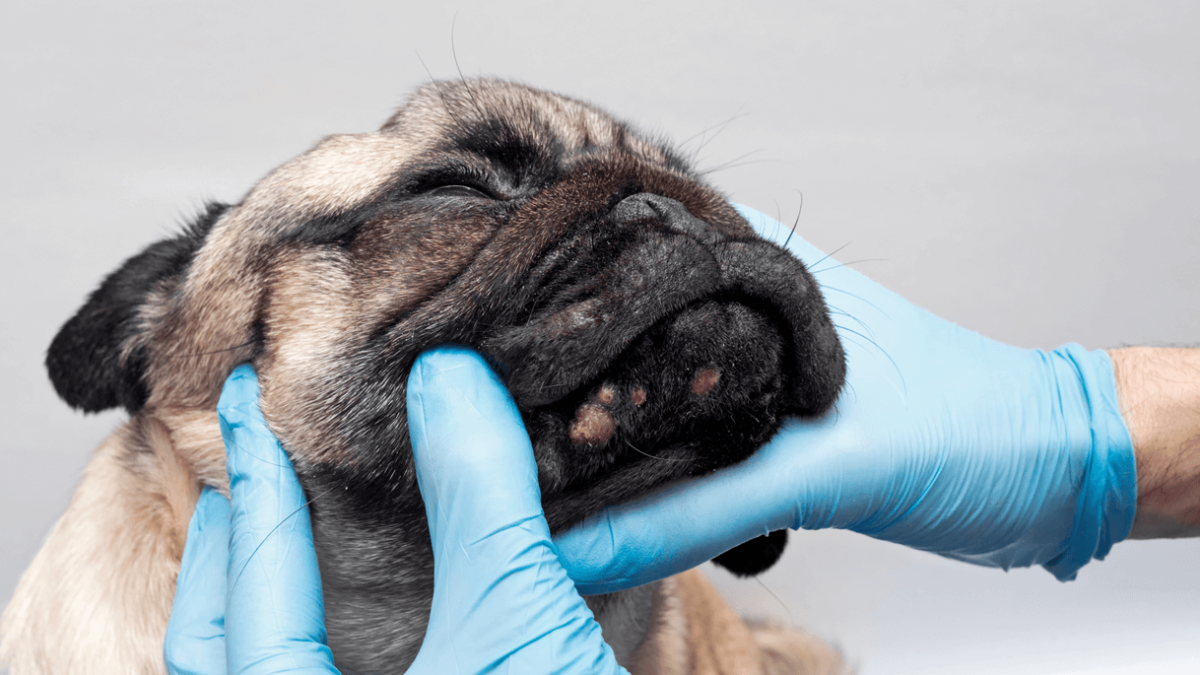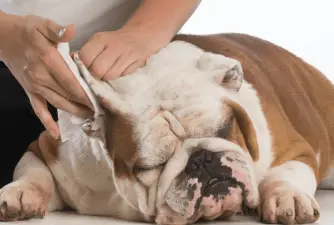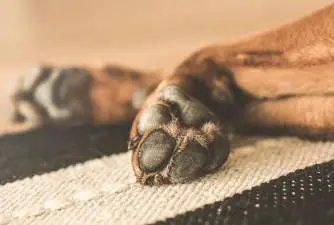How to Treat Dog Acne
05.05.2021.
Most dog owners are surprised to find out dogs can get acne, just like humans do. Most cases of dog acne appear when the dog goes through puberty, which happens when they are between 5 and 8 months old. Like humans, the best way to deal with this inflammatory condition is not to touch it. However, there is a bit more to this issue, and here is what you should know about dog acne or dog pimples.
What are dog pimples?
Dog pimples or dog acne have a scientific term, and it is called canine muzzle folliculitis and furunculosis. These conditions are somewhat similar, but in the case of folliculitis, the hair follicle will get inflamed. In the case of furunculosis, a regular skin follicle will become filled with pus and inflamed.
Most cases of dog acne will simply pass when your dog goes through puberty. However, some severe cases might need a bit of help from your vet. Your pimply canine teenager might end up having painful areas where acne developed. If this condition is left untreated, it can leave an entry point for bacteria that can further complicate your dog’s life. Luckily, the majority of dog acne cases pass before the dog’s first birthday.
What causes dog acne?
Veterinarians and scientists thought dog acne was similar to human acne. They believed this condition is hormone-induced, but recent experiments and researches show that canine acne is not caused by raging hormones. The exact reasons dogs develop pimples are not entirely understood. There are similarities and differences between human and dog acne, and vets are still trying to figure it out.
One relatively clear thing is that breed plays a part in the development of this health condition. Breeds with saggy skin on their muzzle and many skin folds seem to be prone to developing this skin condition. Keep in mind all dogs can develop acne, but certain breeds are somewhat more inclined to them. Those breeds are;
- Doberman
- Boxer
- French Bulldog
- English Bulldog
- Neapolitan Mastiff
- Bullmastiff
- American Staffordshire Terrier
- Great Dane
- German Shorthaired Pointer
Another common thing these breeds have is short coats. Breeds most prone to acne have short, relatively rigid hair. Acne can be triggered by a trauma to a specific area. The hair gets damaged at the root, and the hair follicle bursts in the surrounding area. The surrounding tissue is not familiar with the contents from the hair follicle, and the body’s reaction is to treat it like bacteria. The area will get inflamed, which will leave that same area exposed to bacterial infections.
Dog pimples have been noticed in cases where an underlying skin condition is affecting the dog. Dogs with allergies can develop dog pimples, and they usually stop when the dog gets treated for allergies. Your vet should ask you some questions and possibly test your dog to environmental and food allergies in case of dog acne.
Symptoms of dog acne
Luckily, the vast majority of dog acne cases are relatively harmless. You mustn’t try to pop these pimples. Some owners do that, but they are unaware that it can lead to further issues and problems. If you notice anything weird going on on your dog’s skin, especially around the lips and on the muzzle, you should look for the most common dog acne symptoms. These symptoms include;
- Blackheads
- Red bumps
- Swelling
- Infections
- Your dog might rub their head against rough surfaces like carpet, tree, or wall
- Painful lesions
- Pus in the affected lesions
- Scars
Treating dog pimples
There are a few different ways vets recommend you treat dog acne. The best treatment option will be determined by the severity of the dog’s condition. The most common way vets treat dog acne is by applying topical benzoyl peroxide, which the dog owner will continue to apply at home. This is a common over-the-counter product available in most drug stores or at your vet’s office.
In some cases, the best way to treat acne is by giving your dog antibiotics or steroids to reduce inflammation. The topical antibiotics will take care of any bacterial infections that might have appeared, and steroids will directly impact the inflammation. However, if the bacterial infection has spread, your vet will prescribe your dog some oral antibiotics.
A common steroid medication prescribed for dog acne is prednisone. Check out this article for more information - Prednisone for dogs.
In conclusion
Dog acne is not a serious condition in most cases. Dogs might develop them when they enter puberty, and by the time they are 1 year old, the acne should disappear. Some breeds with short hair and skin folds are more prone to dog pimples, but all dog breeds can potentially develop acne.
World Dog Finder team







Share